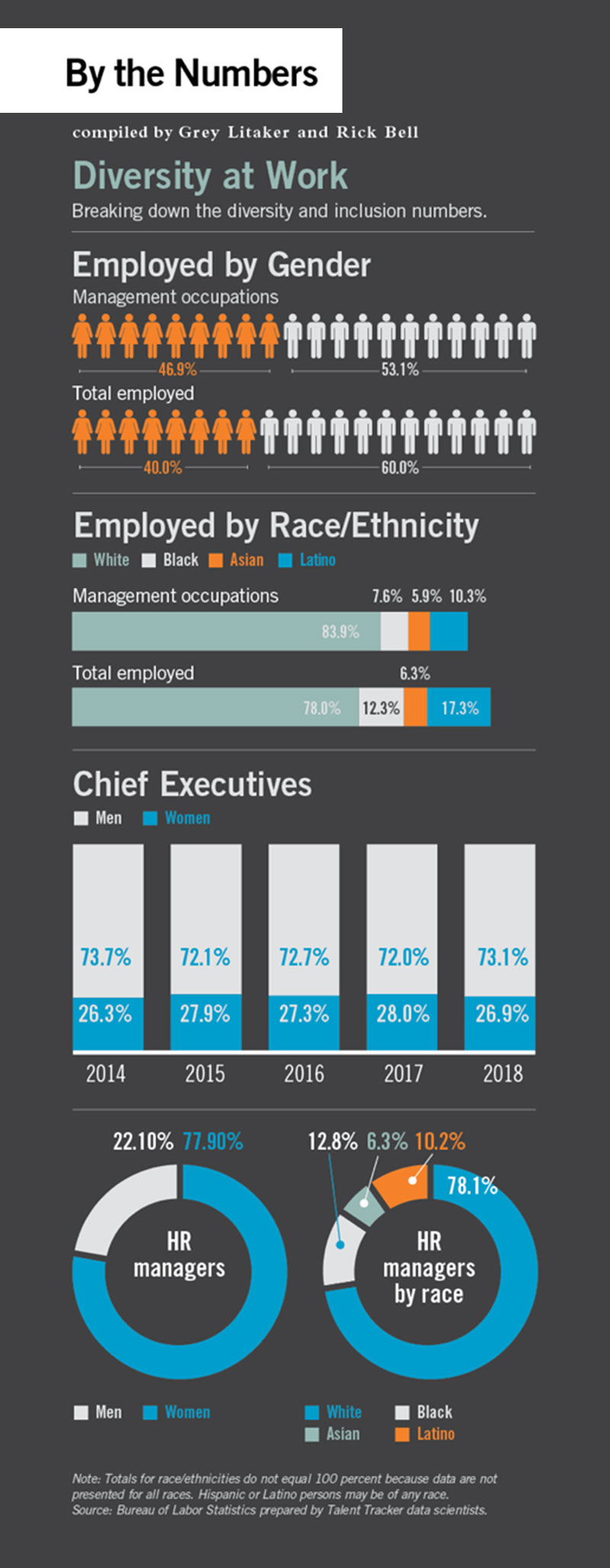
Diversity. It’s undoubtedly something that should exist in today’s workplace. And, it’s something that businesses are after – which is a great starting point. But, are companies really hitting the mark?
In an article by Workforce, which gives a visual overview of statistics provided by Human Capital Media’s Talent Tracker, we see that there is definitely room to improve. Men still outnumber the women in chief executive and management positions. Further, there are still notable inequalities looking at the stats relating to race/ethnicity.

Seeing diversity through rose-tinted glasses
The problem, it seems, is that despite good intentions, companies might still be allowing unconscious bias to seep into their decision-making processes when hiring staff – ultimately affecting the real level of diversity that exists in the workplace. This is according to research from the University of Pennsylvania.
To investigate, Wharton business economics and public policy professors, Judd Kessler and Corinne Low, along with doctoral student, Colin Sullivan, developed a pioneering method of studying hiring without subterfuge, known as incentivized resume rating (IRR).
Using software, characteristics such as academic majors, work experience and leadership skills were gathered from a batch of real resumes provided by recent graduates from the University of Pennsylvania.
This data was reorganized to create fake resumes with names that clearly conveyed individuals’ gender and ethnicity.
Batches of these fake resumes were then assigned to participating hiring managers at companies – many with a stated commitment to diversity – in fields such as finance and technology. The employers indicated how much they liked the make-believe candidates and how likely they thought it would be that candidates would accept their job offer.
Finally, the ratings from the fake resumes were used to match the companies with actual graduates – and the study’s findings were fascinating.
Assessing the real picture
The results showed that hiring managers were in fact not always treating resumes with female or minority names in the same way that they were treating those belonging to white males. Employers in the science, technology, engineering and math (STEM) domains rated females or minorities with a 4.0 grade point average (GPA) equally to white males with a 3.75 GPA.
It also became apparent that employers gave about half the credit to females or minorities who had received a prestigious internship, compared to white males. Interestingly, in general, employers also believed that female and minority candidates were less likely to accept a job offer.
“Companies say that they value diversity and think that everybody else is doing the same, and that they’re all going to be squabbling over these candidates,” Low said. “But our research shows they don’t actually have those preferences.”
How can hiring bias be eliminated?
Wanting diversity isn’t enough. To move forward, Low believes that companies need to think very carefully about how to strip out hard-wired biases. To create a truly diverse work environment, companies need to put solutions that eliminate hiring bias into place.
Fortunately, with technology like Applicant Tracking Software, there is a way to overcome this challenge.